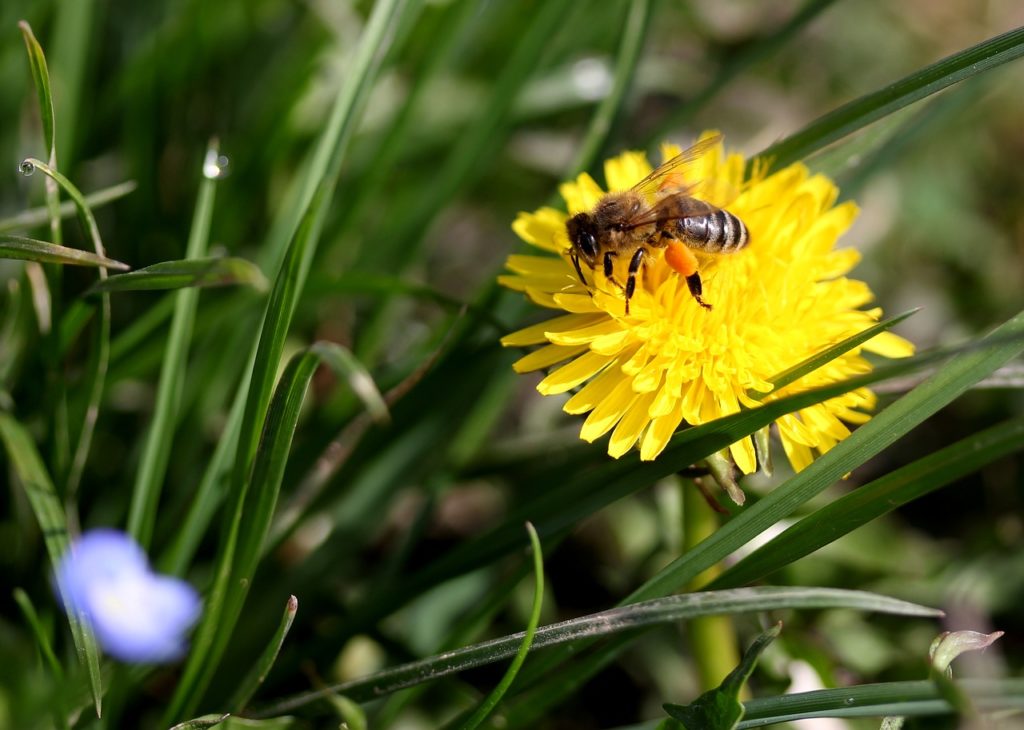
Traditional approaches to lawn care can be hard on the environment. Using irrigation, pesticides, herbicides, fungicides, insecticides, and fertilizer can put a strain on your local habitat (and wallet). There are organic alternatives, however, than can save you money while helping the flora and fauna that call your neighborhood home.
- If it’s green, let it grow. Herbicides are expensive, contaminate waterways, and kill beneficial plants (and the beneficial insects that rely on them). They’re also really bad for people. Many commonly used herbicides are known carcinogens, endocrine disrupters, and neurotoxins – not exactly the kind of thing you want your kids and your dogs rolling around in. If you find an invasive plant in your lawn, you can pull that out. Otherwise, let what wants to grow in that spot grow instead of trying to force grass to grow there.
- It wasn’t until recently that the ideal lawn contained no clover or dandelions. Both these plants have deeper roots than typical lawn turf. This means they’ll stay greener during a drought. They also provide food to beneficial insects like bees. One strategy, keep a bag of clover in your garage and every time a dirt spot appears in your lawn, cast clover seeds there. Clover – which also fixes nitrogen, providing fertility to your lawn – will fill in. It’s easier on you and the environment than trying to keep turf grass alive.
- Set your lawn mower to the highest setting. You want your grass, and other plants living in your lawn, to grow tall enough that their roots grow deeper than they would on a typical putting green. This makes your lawn more resilient to drought because the roots can draw water from deeper in the soil. Just make sure to mow regularly enough that you’re only cutting the top third of the grass blade, otherwise you’re cutting too close to the plant’s crown at the soil level, which will weaken the plant.
- Let your lawn clippings lie. Don’t bag up your clippings. Grass clippings are the only fertilizer your lawn should need. The cut grass blades will compost in place, feeding micro-organisms that return nutrients to the soil. This helps build healthy soil, which retains more water, a key to keeping a lawn alive.
- Leave some leaves in the fall. Too many leaves in the fall can mat and kill grass below it. But you don’t need to rake every single leaf off your lawn. One approach is to leave a thin layer of leaves (you should be able to see the grass poking through below) and run over it a few times with your lawn mower. This method also is an organic way of fertilizing your lawn; the shredded leaves will break down, building your soil, and feeding your grass. Don’t have any leaf piles of your own? Your neighbor would probably be happy to donate a few to you. Dump and mow.
Following these tips should mean less money, less time, and a greener lawn than you have now. Plus you’re helping the environment. That’s a win-win-win-win.
If you’re ready to take the next step and kill your lawn to replace it with something more sustainable, interesting, and useful, take a look at these tips from New England Botanic Garden at Tower Hill’s director of horticulture Mark Richardson.
